New Energy Vehicles Usher in the 'Four Electrifications' Era: A Deep Dive into BYD's CloudRide-Z Technology
![]() 03/31 2025
03/31 2025
![]() 618
618
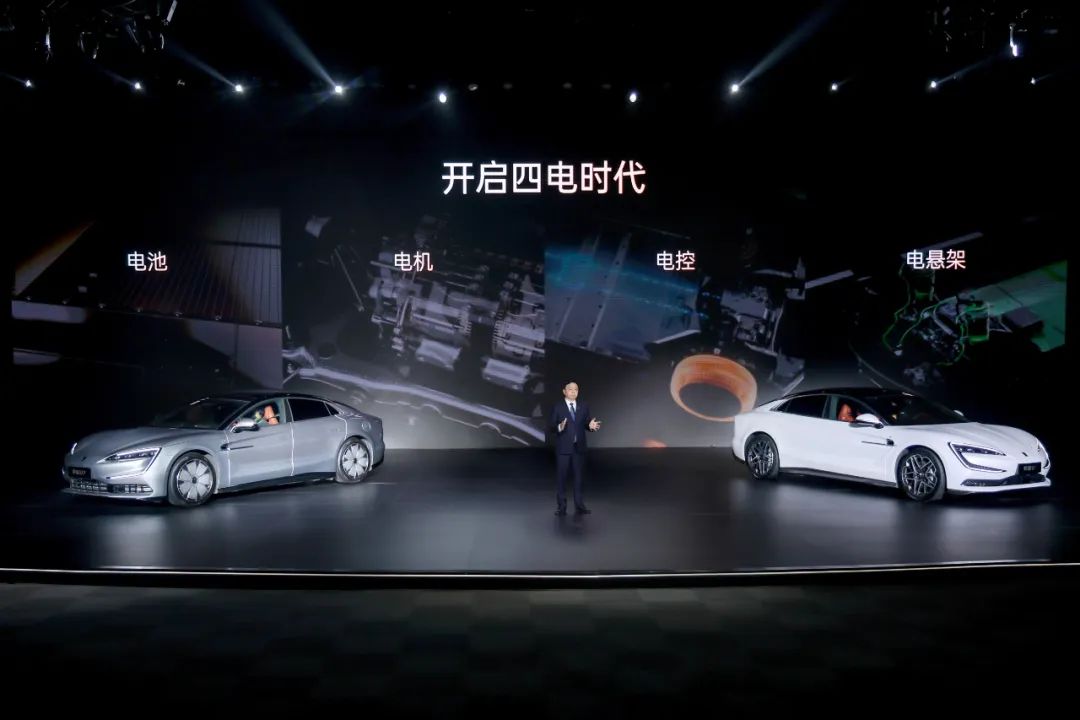
Over the past two years, BYD has been making waves with innovations such as megawatt flash charging, YiSiFang, and CloudRide-X. With the launch of its flagship sedan, Yangwang U7, BYD's latest groundbreaking technology, CloudRide-Z, has officially entered mass production.
BYD Chairman Wang Chuanfu declared that this marks the dawn of the 'four electrifications' era for new energy vehicles, encompassing batteries, motors, electronic control, and electric suspensions.
01
CloudRide-Z: Navigating Uncharted Technological Waters
BYD's CloudRide technology is not a newcomer. First introduced in April 2023, it's an intelligent body control system independently developed by the company. By integrating perception, decision-making, and control, CloudRide actively adjusts the vehicle's body attitude, significantly enhancing comfort, safety, and handling.
The CloudRide family now boasts a comprehensive product matrix, including CloudRide-C, CloudRide-A, CloudRide-P, CloudRide-X, and CloudRide-Z.
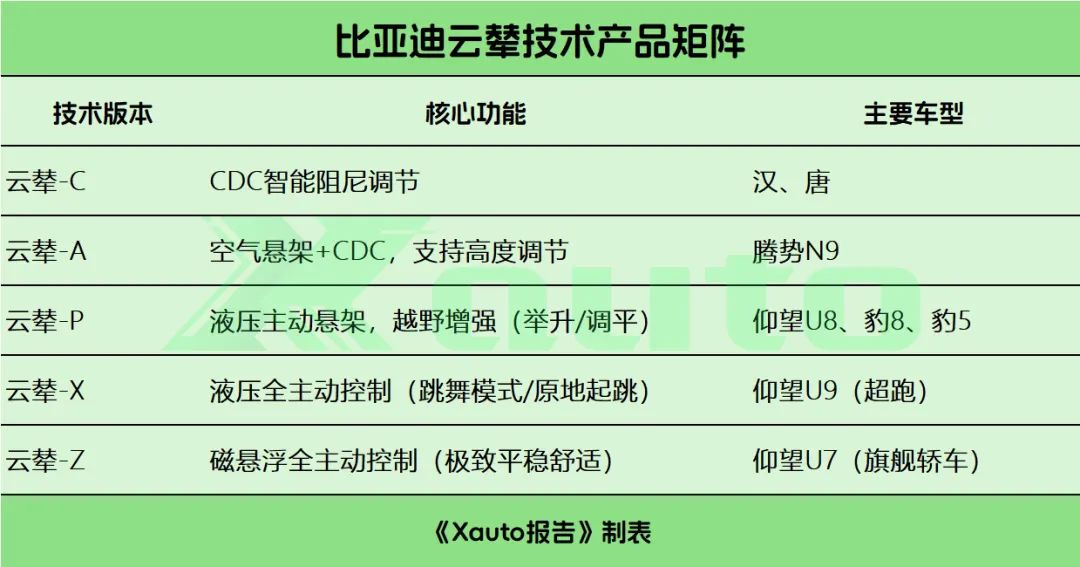
While CloudRide-C, A, P, and X have competitors and reference solutions in the market, CloudRide-Z represents a vertically integrated black technology exclusively created by BYD, venturing into uncharted technological territories.
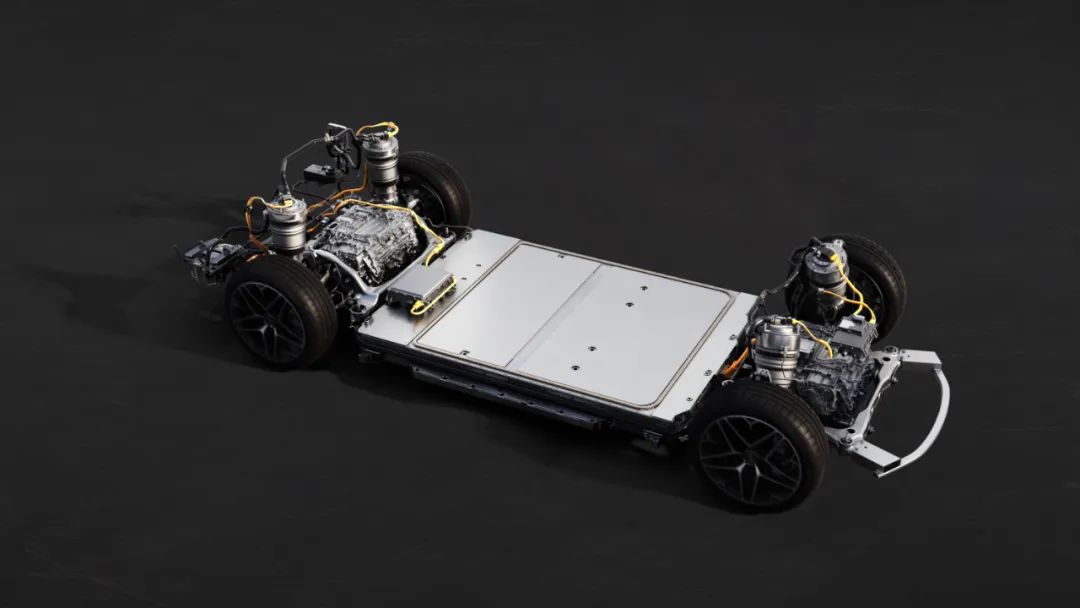
Positioned as the flagship sedan of the Yangwang brand and a pinnacle within the BYD Group, the Yangwang U7's development posed significant challenges for BYD's engineering team, particularly in creating an ultra-stable and comfortable suspension system.
Current automotive products, even those with advanced fully active suspensions, rely on oil as an adjustment medium, which has inherent limitations in energy transfer paths, response speed, and control accuracy.
To push the boundaries of stability and comfort, automotive suspension technology must transcend the limits of oil-based control.
BYD drew inspiration from magnetic levitation trains, applying their propulsion principles to automobiles. By adopting levitation motor direct drive technology, electric energy is directly converted into kinetic energy output, bypassing the oil medium and enabling direct vertical control of the vehicle body using electric energy.
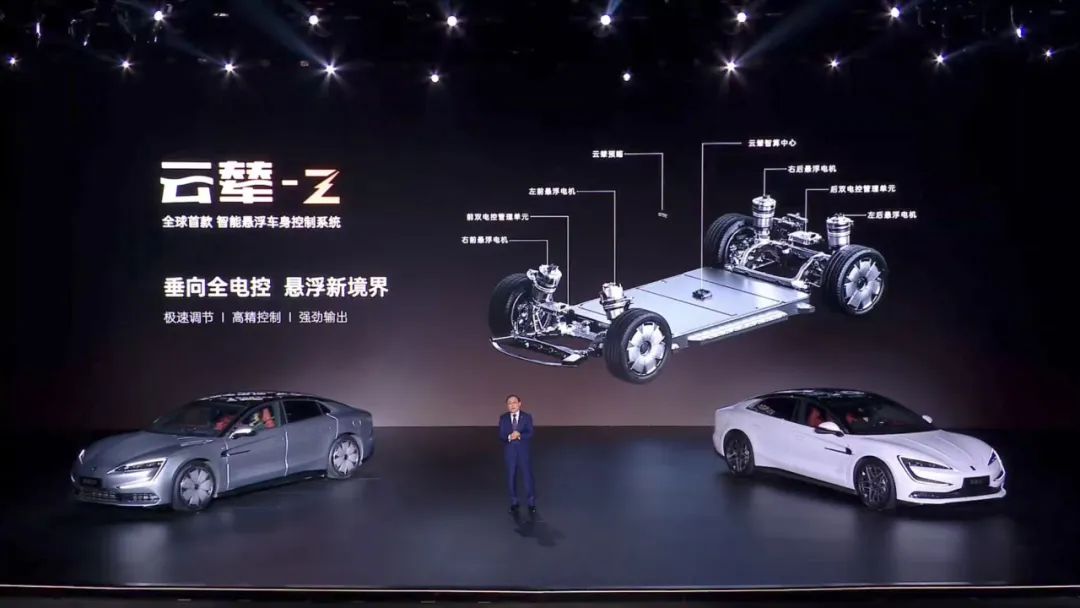
CloudRide-Z's working principle involves sensors capturing road surface and levitation motor displacement information, converting it into electrical signals. These signals are processed by the levitation algorithm in the CloudRide intelligent computing center, which collaborates with the electronic control management unit to output electric energy. During operation, the levitation motor converts electric energy into kinetic energy, actively counteracting road vibrations to decouple upper and lower body vibrations, providing a suspended feeling and superior comfort.
When the levitation motor operates passively due to road forces, it converts kinetic energy back into electric energy, realizing energy recovery.
This direct conversion of electric energy to kinetic energy achieves a true electric suspension, marking a revolutionary shift from 'oil' to 'electricity.' This innovation underscores Wang Chuanfu's vision of the 'four electrification system' for new energy vehicles.
02
The Challenges of Technological Innovation and Implementation
As a pioneer in uncharted territories, BYD had to conduct extensive self-research and exploration across materials, structures, algorithms, processes, and system verification.
Lian Yubo, President of BYD's Automobile Engineering Research Institute, revealed that it took seven years and the efforts of tens of thousands of people to achieve a breakthrough.
Lian highlighted several core difficulties, noting that existing industry sensors could not meet CloudRide-Z's perception requirements in terms of speed and accuracy. To address this, BYD exclusively developed the Magic Ruler sensor for CloudRide-Z, pioneering the application of 3D Hall sensor technology in vehicle vertical control.
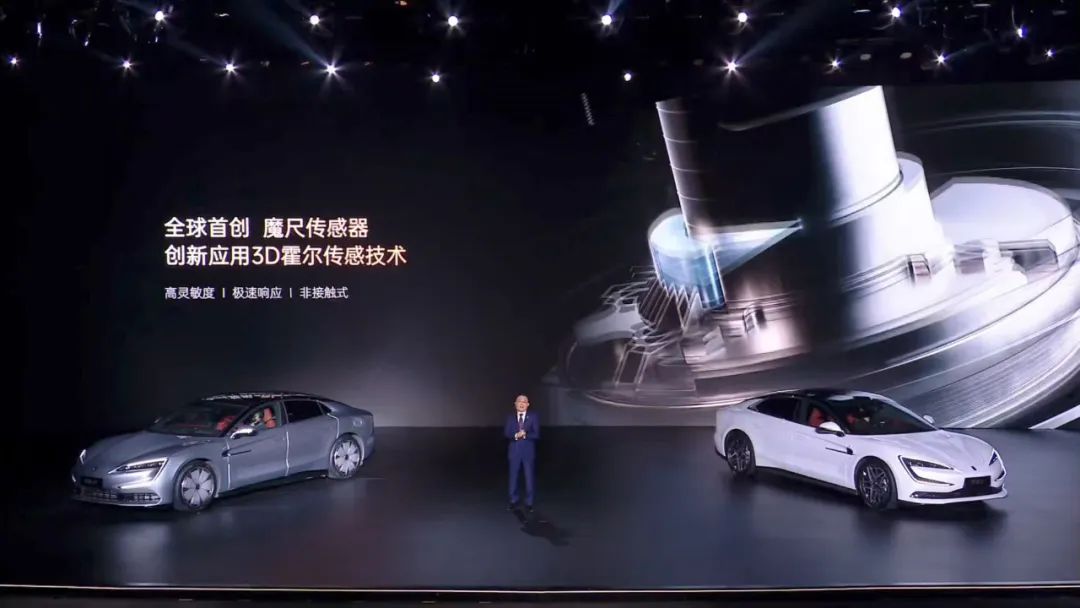
Typically used in aviation and medical fields, this technology measures displacement by detecting magnetic field changes, offering high sensitivity, ultra-fast response, and non-contact measurement. The Magic Ruler sensor, placed inside the levitation motor, must adapt to harsh environments and overcome mechanical wear from high-frequency operations, solving challenges such as spatial layout and strong magnetic interference.
BYD overcame multiple technological hurdles, including magnetic strip encoding, position calculation, signal transmission, and magnetic field isolation, to create the Magic Ruler sensor.
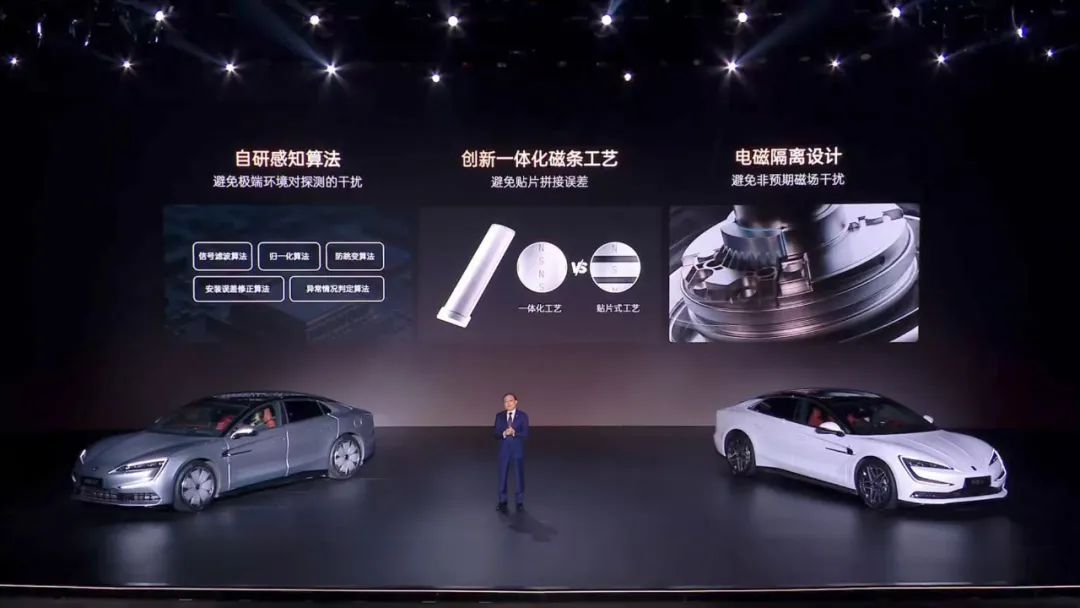
With a detection speed of 50 microseconds, the Magic Ruler sensor captures the vehicle's body attitude 4,000 times in the blink of an eye, 20 times faster than mainstream levels. Its detection accuracy reaches 10 microns, a fraction of the diameter of a human hair (100 microns).
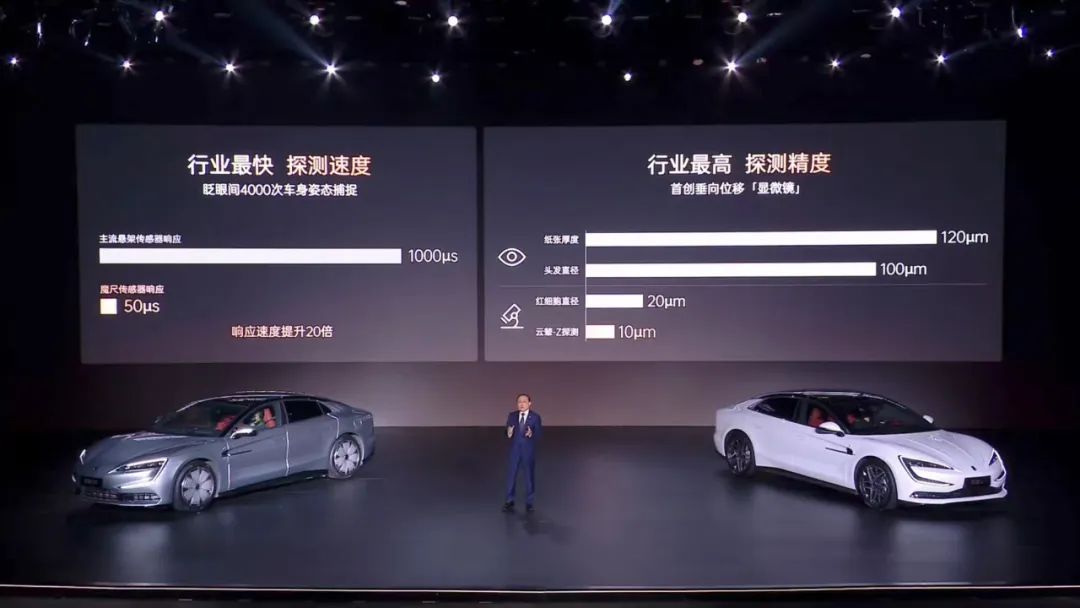
Balancing high thrust with a compact size was another significant challenge for levitation motors. BYD analyzed over 3 million topological structures and, after rigorous verification, selected the optimal rotor and stator arrangement.
CloudRide-Z boasts the highest system voltage among vertical control systems. To support this, BYD independently developed a 1200V ultra-high voltage power supply module and integrated a high-efficiency dual electronic control management unit, ensuring system stability and reliability in high-voltage environments.
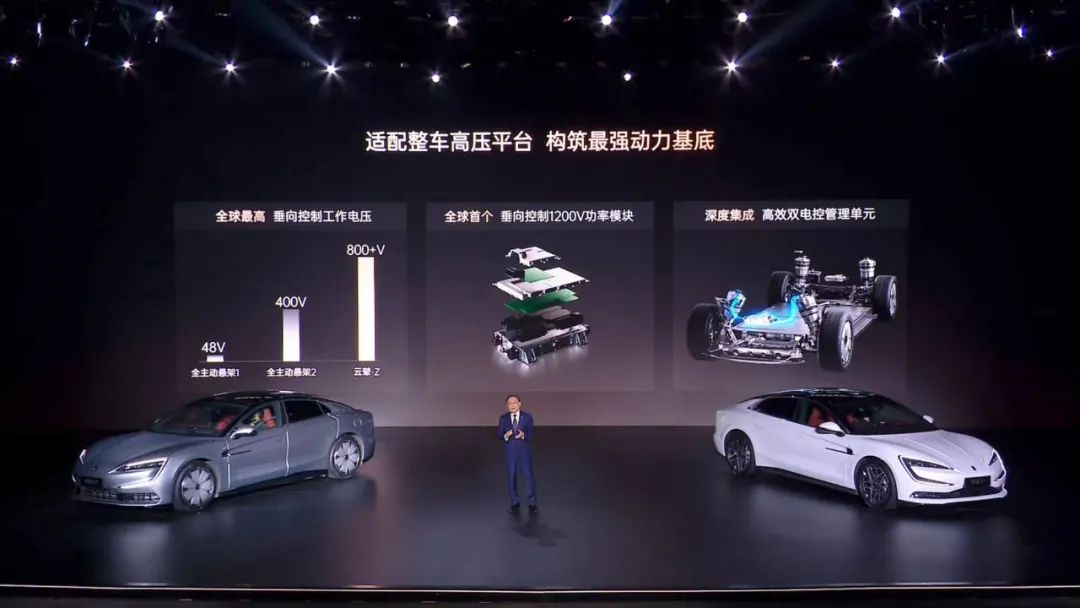
BYD also pioneered the world's first levitation algorithm, enabling digital adjustment of the vehicle's body attitude under all operating conditions.
03
Fast, Accurate, and Stable Suspension Adjustment for an Unparalleled Driving Experience
When asked about the benefits of CloudRide-Z's full electric control, Lian Yubo succinctly summarized them as fast, accurate, and stable, referring to rapid adjustment, high-precision control, and robust output.
Lian explained that CloudRide-Z's full-link execution time is merely 5 milliseconds, allowing it to adjust almost instantaneously without relying on preview.
In contrast, current mainstream products take over 100 milliseconds to adjust and often only perceive and respond without full-link execution.
Moreover, CloudRide-Z's body adjustment accuracy is just 1mm.
Its system peak power stands at 50kW, equivalent to the power of a small aircraft, representing the pinnacle of vertical control technology.
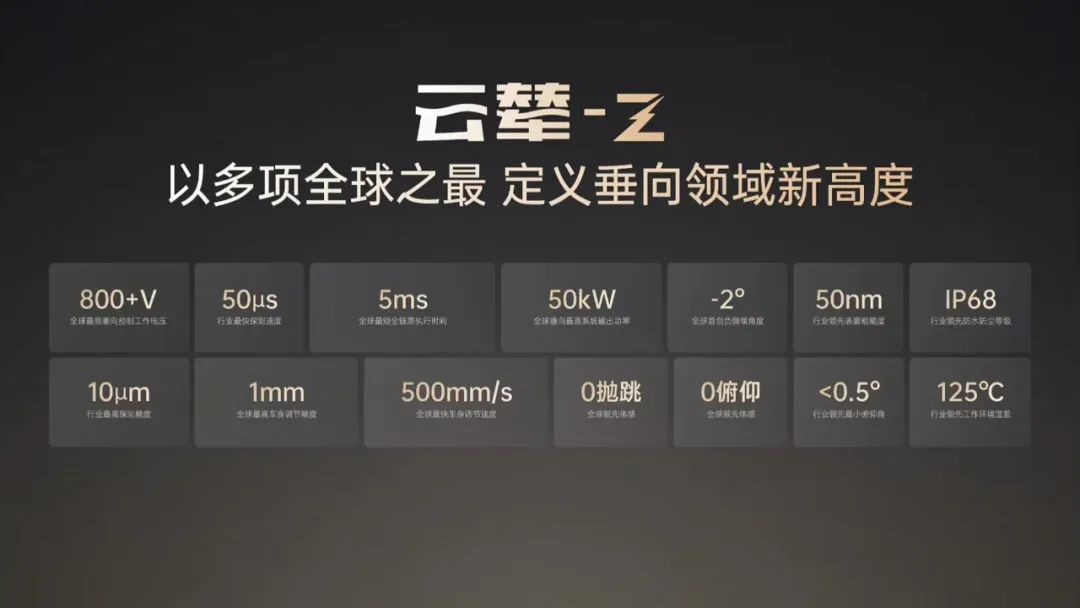
Regarding specific functions:
1) During high-speed driving over road-bridge connections, CloudRide-Z instantly stabilizes the vehicle body, achieving a perceptual zero-bounce, effectively mitigating the risk of high instability.
2) During rapid acceleration and deceleration from 0 to 100 km/h, it maintains a pitch angle of less than 0.5°, providing users with virtually zero pitch and ultimate comfort during intense driving.
3) When turning, the vehicle's body can be easily thrown out due to inertia. CloudRide-Z creates a negative roll angle function, with a maximum angle of -2°, further enhancing the perceptual experience.
4) CloudRide-Z also offers kerb assistance and levitation climbing functions. By precisely adjusting the compressed wheel's travel, it performs real-time dynamic leveling and smoothly climbs stairs.
5) BYD conducted 19 types of continuous high and low-frequency road section tests to ensure smooth and comfortable driving regardless of road conditions.
6) CloudRide-Z features active defense capabilities. In the event of a side collision, the vehicle body instantly lifts unilaterally, transferring the impact to areas with higher strength, ensuring driving safety.
7) During operation, the vehicle may encounter obstacles like falling rocks or garage height restrictions. CloudRide-Z achieves an adjustment speed of 500m/s, cooperating with the preview function, to quickly avoid obstacles.
Lian noted that the above scenarios are just a few examples and that more will be updated via OTA based on user driving scenarios in the future.
From the conference description, the driving experience delivered by CloudRide-Z promises to be groundbreaking. We eagerly await genuine user feedback after the delivery of Yangwang U7 to see how it performs in real-world conditions.







